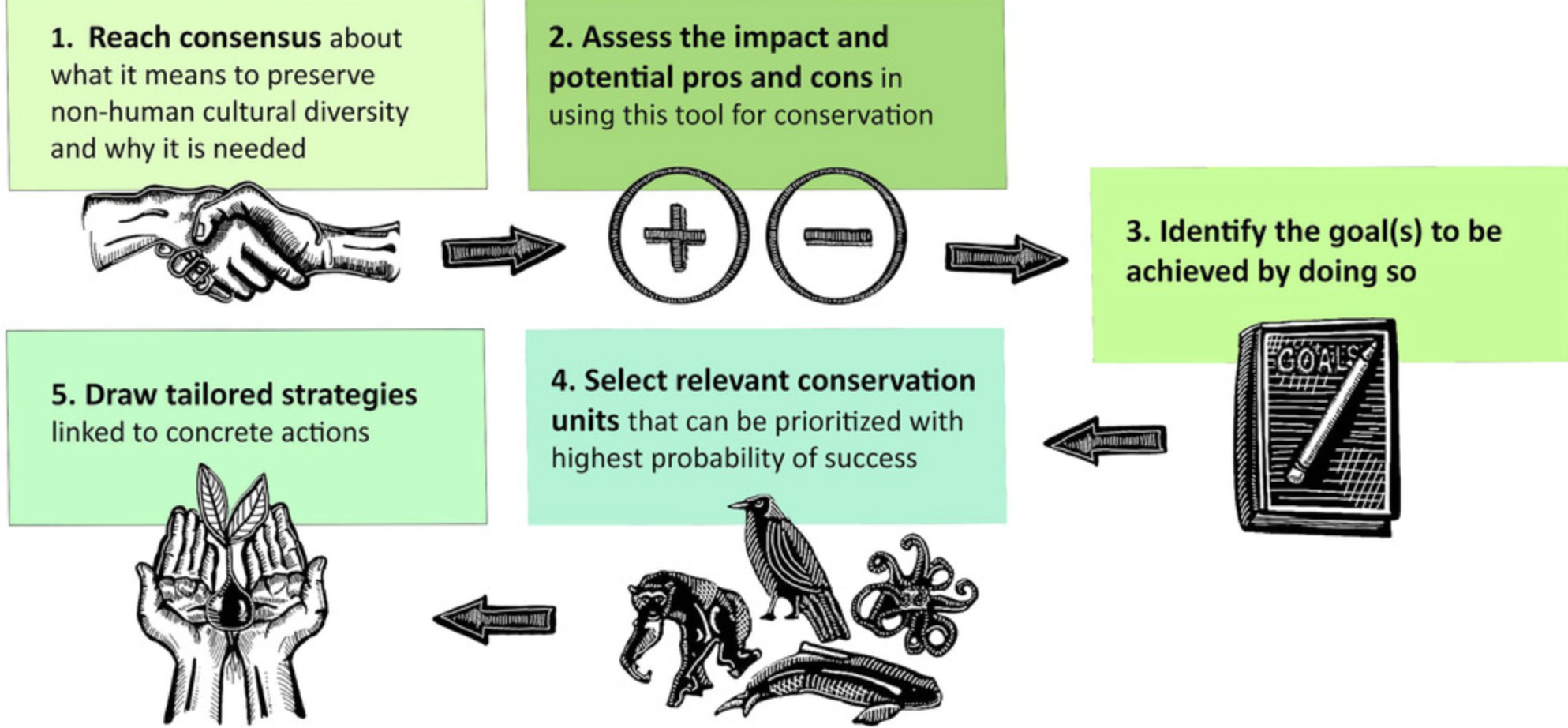
Culture long thought to be unique to humans, has since been identified in a growing number of taxa. This paper co authored by Tatanya Humle explores how Non human culture can advance conservation.
Dr Tatyana Humle co-authors on ‘Using non-human culture in conservation requires careful and concerted action’, a paper which is an intersection between non-human animal culture and conservation.
‘Discussions of how animal culture can aid the conservation crisis are burgeoning.’ the abstract reads ‘As scientists and conservationists working to protect endangered species, we call for reflection on how the culture concept may be applied in practice. Here, we discuss both the potential benefits and potential shortcomings of applying the animal culture concept, and propose a set of achievable milestones that will help guide and ensure its effective integration existing conservation frameworks, such as Adaptive Management cycles or Open Standards.’

With over twenty researchers collaborating on this paper we asked Humle about the collaboration and its aims.
‘The Working Group on Chimpanzee Cultures (WGCC) of the Section on Great Apes of the IUCN SSC Primate Specialist Group brings together experts on chimpanzee cultural behaviour and conservation science and policy from countries where wild chimpanzees occur and beyond.’ Humle explained ‘The purpose of our article in Conservation Letters is to stimulate a serious reflection on how the culture concept may be applied in practice and the potential benefits and shortcomings this may entail, while proposing an initial framework as to how this could be achieved in a considered and sensible fashion.’
Read the full paper here.




